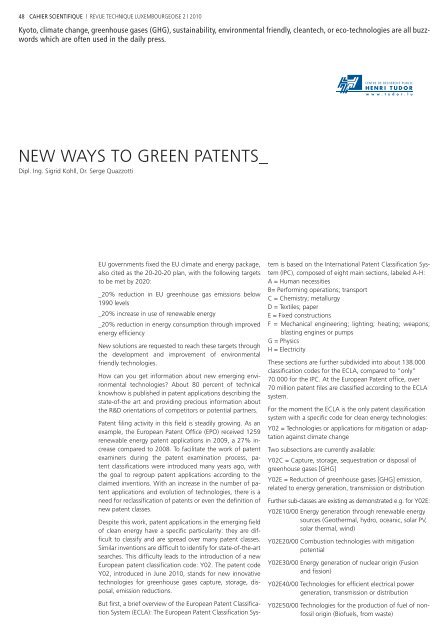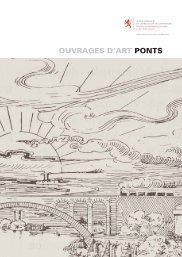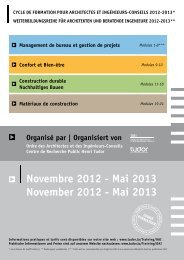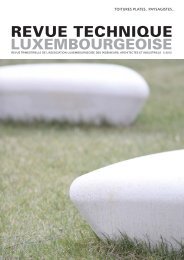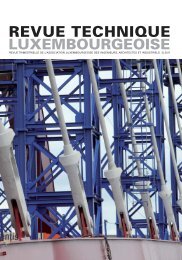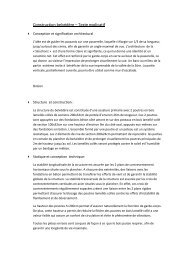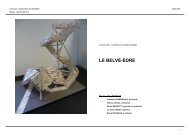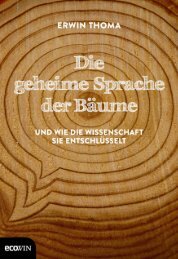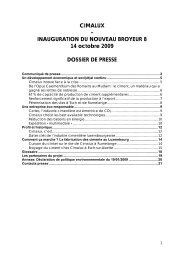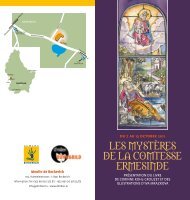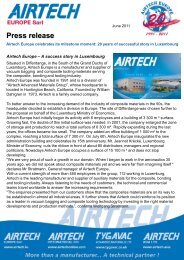cahier scientifique revue technique luxembourgeoise
cahier scientifique revue technique luxembourgeoise
cahier scientifique revue technique luxembourgeoise
Sie wollen auch ein ePaper? Erhöhen Sie die Reichweite Ihrer Titel.
YUMPU macht aus Druck-PDFs automatisch weboptimierte ePaper, die Google liebt.
48 CAHIER SCIENTIFIQUE | REVUE TECHNIQUE LUXEMBOURGEOISE 2 | 2010<br />
Kyoto, climate change, greenhouse gases (GHG), sustainability, environmental friendly, cleantech, or eco-technologies are all buzz-<br />
words which are often used in the daily press.<br />
NEW WAYS TO GREEN PATENTS_<br />
Dipl. Ing. Sigrid Kohll, Dr. Serge Quazzotti<br />
EU governments fi xed the EU climate and energy package,<br />
also cited as the 20-20-20 plan, with the following targets<br />
to be met by 2020:<br />
_20% reduction in EU greenhouse gas emissions below<br />
1990 levels<br />
_20% increase in use of renewable energy<br />
_20% reduction in energy consumption through improved<br />
energy effi ciency<br />
New solutions are requested to reach these targets through<br />
the development and improvement of environmental<br />
friendly technologies.<br />
How can you get information about new emerging environmental<br />
technologies? About 80 percent of technical<br />
knowhow is published in patent applications describing the<br />
state-of-the art and providing precious information about<br />
the R&D orientations of competitors or potential partners.<br />
Patent fi ling activity in this fi eld is steadily growing. As an<br />
example, the European Patent Offi ce (EPO) received 1259<br />
renewable energy patent applications in 2009, a 27% increase<br />
compared to 2008. To facilitate the work of patent<br />
examiners during the patent examination process, patent<br />
classifi cations were introduced many years ago, with<br />
the goal to regroup patent applications according to the<br />
claimed inventions. With an increase in the number of patent<br />
applications and evolution of technologies, there is a<br />
need for reclassifi cation of patents or even the defi nition of<br />
new patent classes.<br />
Despite this work, patent applications in the emerging fi eld<br />
of clean energy have a specifi c particularity: they are diffi<br />
cult to classify and are spread over many patent classes.<br />
Similar inventions are diffi cult to identify for state-of-the-art<br />
searches. This diffi culty leads to the introduction of a new<br />
European patent classifi cation code: Y02. The patent code<br />
Y02, introduced in June 2010, stands for new innovative<br />
technologies for greenhouse gases capture, storage, disposal,<br />
emission reductions.<br />
But fi rst, a brief overview of the European Patent Classifi cation<br />
System (ECLA): The European Patent Classifi cation Sys-<br />
tem is based on the International Patent Classifi cation System<br />
(IPC), composed of eight main sections, labeled A-H:<br />
A = Human necessities<br />
B= Performing operations; transport<br />
C = Chemistry; metallurgy<br />
D = Textiles; paper<br />
E = Fixed constructions<br />
F = Mechanical engineering; lighting; heating; weapons;<br />
blasting engines or pumps<br />
G = Physics<br />
H = Electricity<br />
These sections are further subdivided into about 138.000<br />
classifi cation codes for the ECLA, compared to “only”<br />
70.000 for the IPC. At the European Patent offi ce, over<br />
70 million patent fi les are classifi ed according to the ECLA<br />
system.<br />
For the moment the ECLA is the only patent classifi cation<br />
system with a specifi c code for clean energy technologies:<br />
Y02 = Technologies or applications for mitigation or adaptation<br />
against climate change<br />
Two subsections are currently available:<br />
Y02C = Capture, storage, sequestration or disposal of<br />
greenhouse gases [GHG]<br />
Y02E = Reduction of greenhouse gases [GHG] emission,<br />
related to energy generation, transmission or distribution<br />
Further sub-classes are existing as demonstrated e.g. for Y02E:<br />
Y02E10/00 Energy generation through renewable energy<br />
sources (Geothermal, hydro, oceanic, solar PV,<br />
solar thermal, wind)<br />
Y02E20/00 Combustion technologies with mitigation<br />
potential<br />
Y02E30/00 Energy generation of nuclear origin (Fusion<br />
and fi ssion)<br />
Y02E40/00 Technologies for effi cient electrical power<br />
generation, transmission or distribution<br />
Y02E50/00 Technologies for the production of fuel of nonfossil<br />
origin (Biofuels, from waste)


